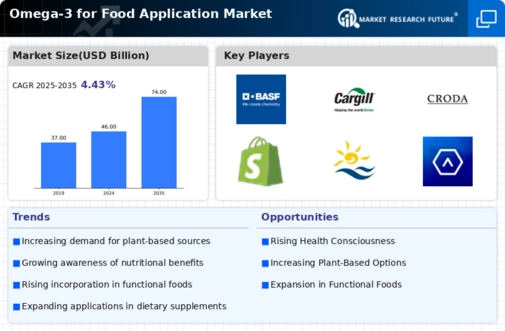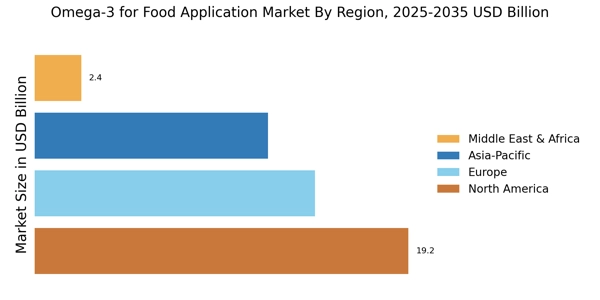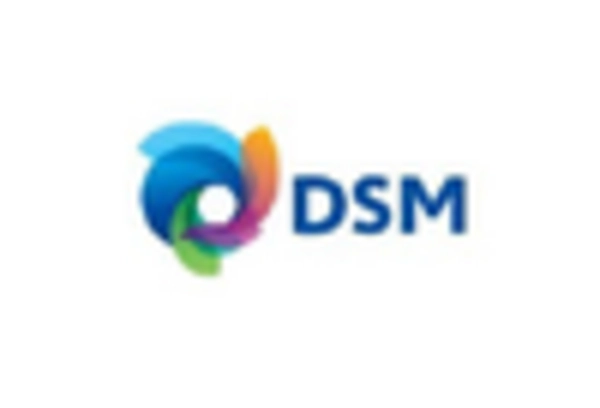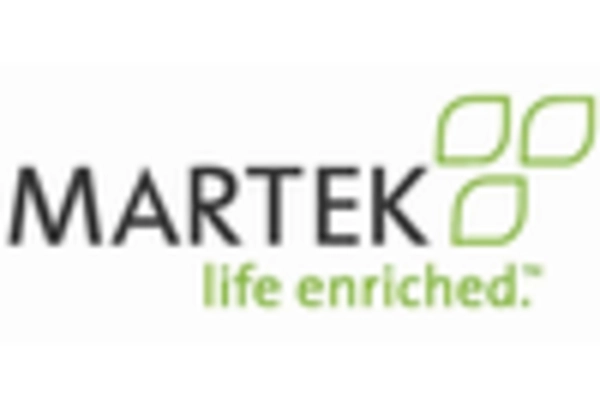Increasing Health Awareness
The Omega-3 for Food Application Market is experiencing a surge in demand driven by heightened health awareness among consumers. Individuals are increasingly seeking dietary supplements and functional foods that promote heart health, cognitive function, and overall well-being. Research indicates that Omega-3 fatty acids, particularly EPA and DHA, play a crucial role in reducing inflammation and supporting cardiovascular health. As consumers become more informed about the benefits of Omega-3, the market is likely to expand, with a projected growth rate of approximately 8% annually. This trend suggests that manufacturers are responding by incorporating Omega-3 into a variety of food products, including dairy, beverages, and snacks, thereby enhancing their nutritional profiles.
Innovations in Food Technology
Innovations in food technology are significantly influencing the Omega-3 for Food Application Market. Advances in extraction and encapsulation techniques have improved the stability and bioavailability of Omega-3 fatty acids, making them more appealing for incorporation into various food products. For instance, microencapsulation allows for the protection of Omega-3 from oxidation, thereby extending shelf life and maintaining product quality. This technological progress is likely to encourage food manufacturers to explore new applications for Omega-3, potentially leading to a broader range of fortified products. The market is projected to witness a compound annual growth rate of around 7% as companies leverage these innovations to meet consumer demand for healthier food options.
Rising Demand for Sustainable Sourcing
Rising demand for sustainable sourcing is increasingly influencing the Omega-3 for Food Application Market. Consumers are becoming more conscious of the environmental impact of their food choices, leading to a preference for sustainably sourced Omega-3 ingredients. This trend is prompting manufacturers to seek out eco-friendly alternatives, such as algae-based Omega-3, which have a lower carbon footprint compared to traditional fish oil sources. Market analysis indicates that the sustainable Omega-3 segment is projected to grow by approximately 10% over the next five years. This shift towards sustainability not only aligns with consumer values but also encourages innovation in product development, as companies strive to meet the expectations of environmentally aware consumers.
Growing Popularity of Plant-Based Diets
The growing popularity of plant-based diets is reshaping the Omega-3 for Food Application Market. As more consumers adopt vegetarian and vegan lifestyles, the demand for plant-derived sources of Omega-3, such as algal oil, is on the rise. This shift is prompting food manufacturers to explore alternative sources of Omega-3 that align with consumer preferences for sustainable and ethical food choices. Market data suggests that the plant-based Omega-3 segment is expected to grow at a rate of 9% over the next five years. This trend indicates a potential shift in product formulations, with an increasing number of food products being fortified with plant-based Omega-3 options to cater to this expanding consumer base.
Regulatory Support for Nutritional Fortification
Regulatory support for nutritional fortification is playing a pivotal role in the Omega-3 for Food Application Market. Governments and health organizations are increasingly recognizing the importance of Omega-3 fatty acids in public health, leading to initiatives that encourage the fortification of food products with these essential nutrients. For example, certain countries have implemented guidelines that promote the inclusion of Omega-3 in staple foods, thereby enhancing the nutritional quality of diets. This regulatory backing is likely to stimulate market growth, as food manufacturers are incentivized to develop Omega-3 enriched products. The market is anticipated to expand as a result of these supportive policies, with an expected growth rate of 6% in the coming years.


















Leave a Comment